Keep your garden blooming throughout the year with these seasonal garden planning tips. This guide covers unique seasonal vegetation and practical maintenance protocols.
Designing a Garden for Seasonal Blooms Tips
Have you ever wondered how some people have year-round garden blooms regardless of seasonal changes? Would you believe there are blooming garden tips to help you achieve the same result in your yard?
Creating a seasonal flower garden involves more than planting a few seeds and hoping for the best result.
You must understand nature’s rhythm and choose the right plants in the right blooming cycle for a successful seasonal garden design.
Whether you’re a seasoned gardener or a beginner, if you’re ready to have your garden bursting with colors all year round, this guide is for you.
Mastering the Bloom Calendar: Understanding Nature’s Timing
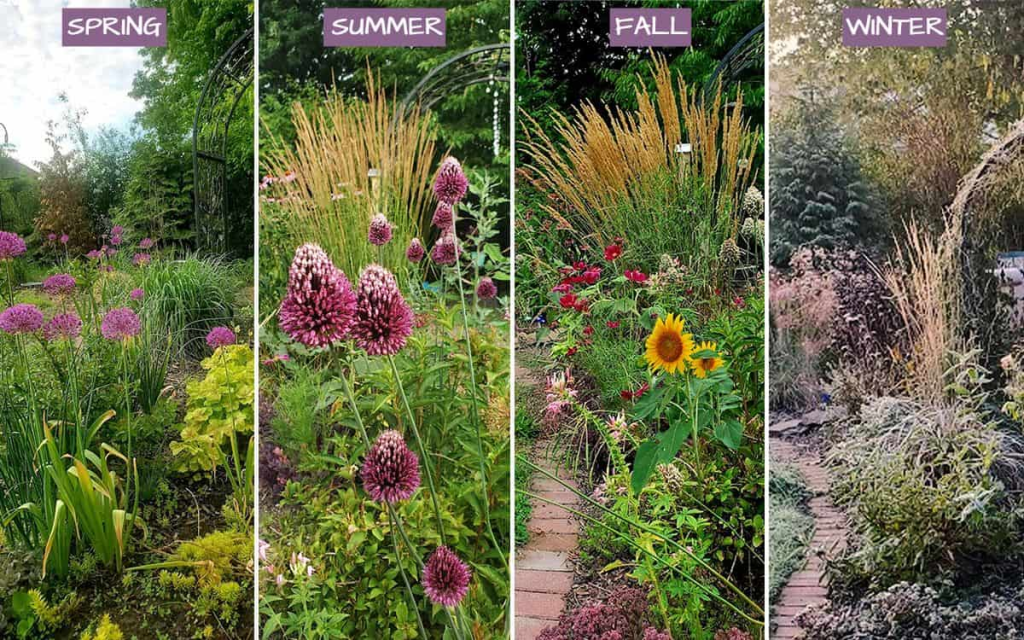
First, you must grasp the concept of bloom cycles and how they work to properly use them to your advantage.
Nature isn’t linear, and its ebbs and flows form a progression of blooms with each seasonal change. In this flower timing guide, I’ll explain how to choose the seeds to bloom each season based on observations and facts.
You’ll notice that Daffodils and Tulips usher in Spring, while Summer brings vibrant hues with Marigolds and Sunflowers. Then Autumn paints our landscapes with rich oranges, reds, and browns, while Winter closes the year with resilient flowers like Hellebore.
With a rounded knowledge of blooming cycles, gardening by season becomes a cheat code for year-round vibrancy. So, let’s dive into this bloom season planner for a seamless visual symphony every month.
Author’s Note: Check out our post How To Plan A Flower Garden Easily for a detailed guide on everything garden planning!
Selecting Plants That Keep Your Garden Blooming
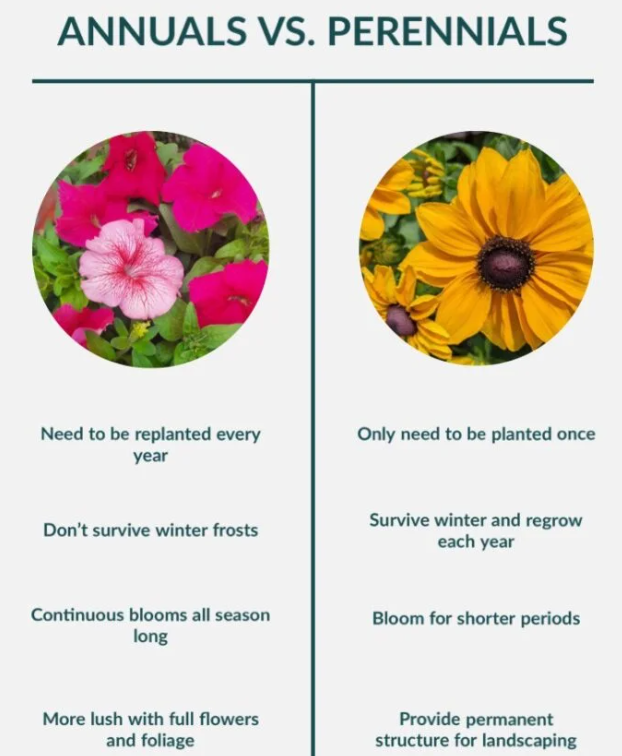
Diversity is the key to having a thriving garden. Carefully curate your garden plant combinations by mixing annuals with perennials.
Annuals and Perennials
Perennials return yearly and thrive with annuals that provide bursts of color. Some of the best perennials and annuals include peonies and coneflowers.
All-Season Plants
However, when choosing all-season plants, you can’t forget the trees and shrubs! Evergreens provide structure and visual interest in Winter, while Autumn gardens gain life from foliage falling from deciduous trees.
Strategic Planting
Instead of planting linearly, create depth by layering plants by height, such that tall plants form a backdrop to highlight shorter ones. This system works on flowering shrubs for seasons with harsh weather, whether heavy rains or excess sunlight.
Selecting plants for an all-year bloom is about creating a tapestry of textures and colors that stay exciting with every season change.
Let’s get into it!
Spring Awakening: Best Plants for a Colorful Start
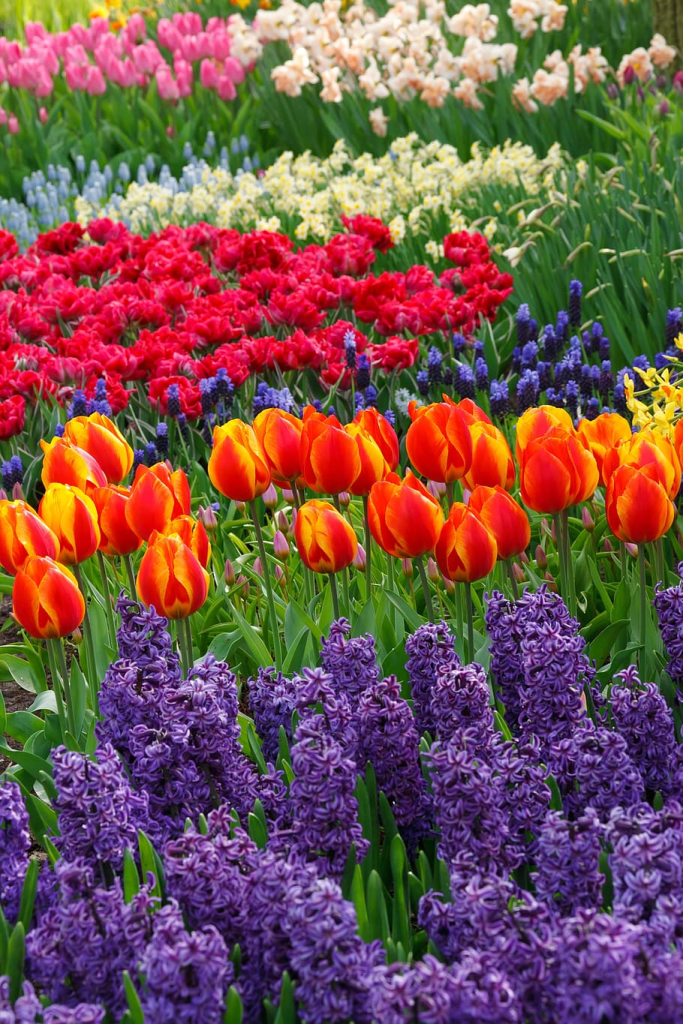
Of course, we’re starting with the season of renewal, Spring.
I like incorporating classic favorites like Hyacinths, Cherry Blossoms, Tulips, and Daffodils when selecting spring garden flowers. Robust daffodils create a cheerful spring display and are easy to maintain.
This mix is perfect for an early bloom garden, offering vibrant colors and delightful fragrances to awaken your senses after a long winter.
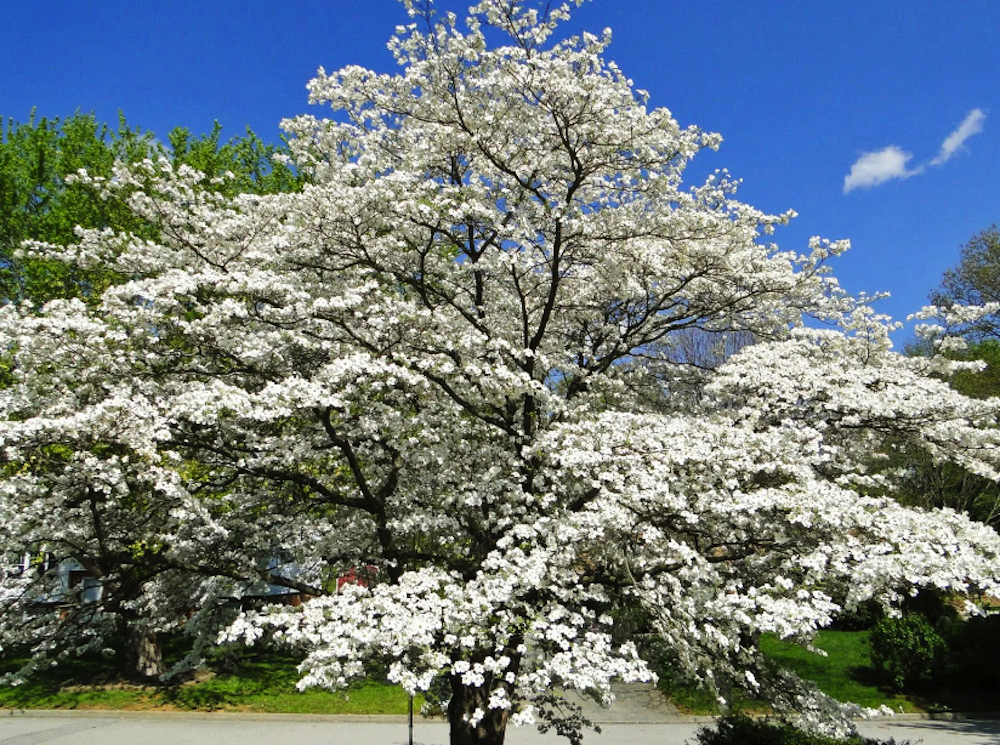
You can add some drama and height by layering shrubs and ground covers with flowering trees in Spring. Use Dogwood and Magnolia as the backdrop for creeping Phlox, especially on your pathways.
Spring’s magic lies in contrast and variety, showing a promise of what lies ahead of the seasons. So, feel free to mix and match.
Designing for Summer Impact and Pollinator Appeal
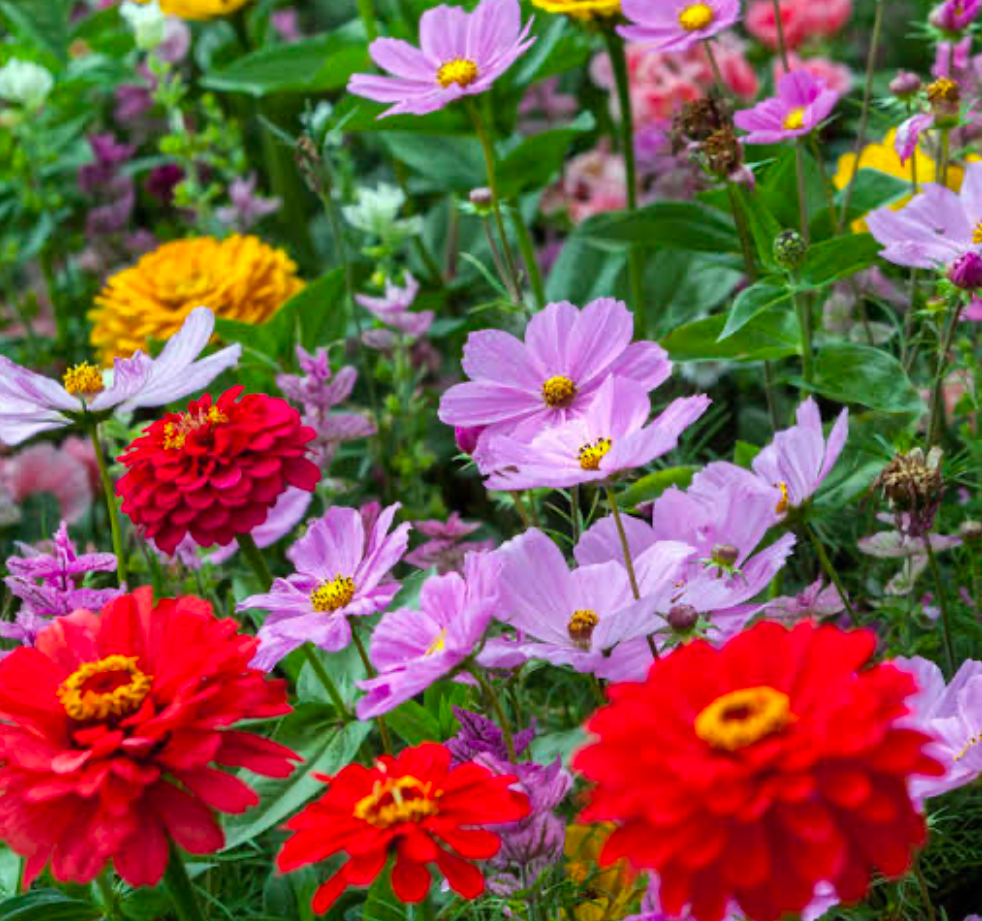
A transition into Summer presents an opportunity for bold, vibrant colors with summer-blooming plants.
Strategic Summer Planting
For a vibrant summer garden, you’ll need heat-tolerant plants like Zinnias, Cosmos, and Daylilies.
Add shade plants in non-sunny spots as a practical way to ensure your garden is always lovely, no matter where you look.
Decorate your pathways with planted pots to ensure guests can meander through the fragrant and colorful landscape.
Pollinator Garden Tips
Use these pollinator garden tips to encourage beneficial insects to migrate into your garden.
- Planting these summer plants in clusters and groups enhances their visual appeal and creates a symbiotic ecosystem.
- Adding native summer flowers to your garden is a game-changer since they naturally thrive in heat, adapt to local climate conditions, and attract pollinators like bees and butterflies.
Celebrating Autumn: Foliage and Flowers for Fall Charm

They can be bright and colorful asters and chrysanthemums
When Autumn rolls in, it’s time for ornamental grasses, warm and earthy-toned leaves, and foliage that comes with this season.
Some popular autumn blooming flowers that should grace your garden include Chrysanthemums and Asters, while ornamental grass provides movement with a whimsical aura.

Use fall foliage plants to your advantage by turning them into decorative arrangements, and keep Evergreens in the background for consistent vibrancy.
For more fall garden ideas, plant fruit-bearing shrubs and trees like Crab Apples to serve multipurpose functions and watch your Autumn garden create a cozy embrace from nature’s changing face.
Winter Beauty: Color and Structure in the Cold
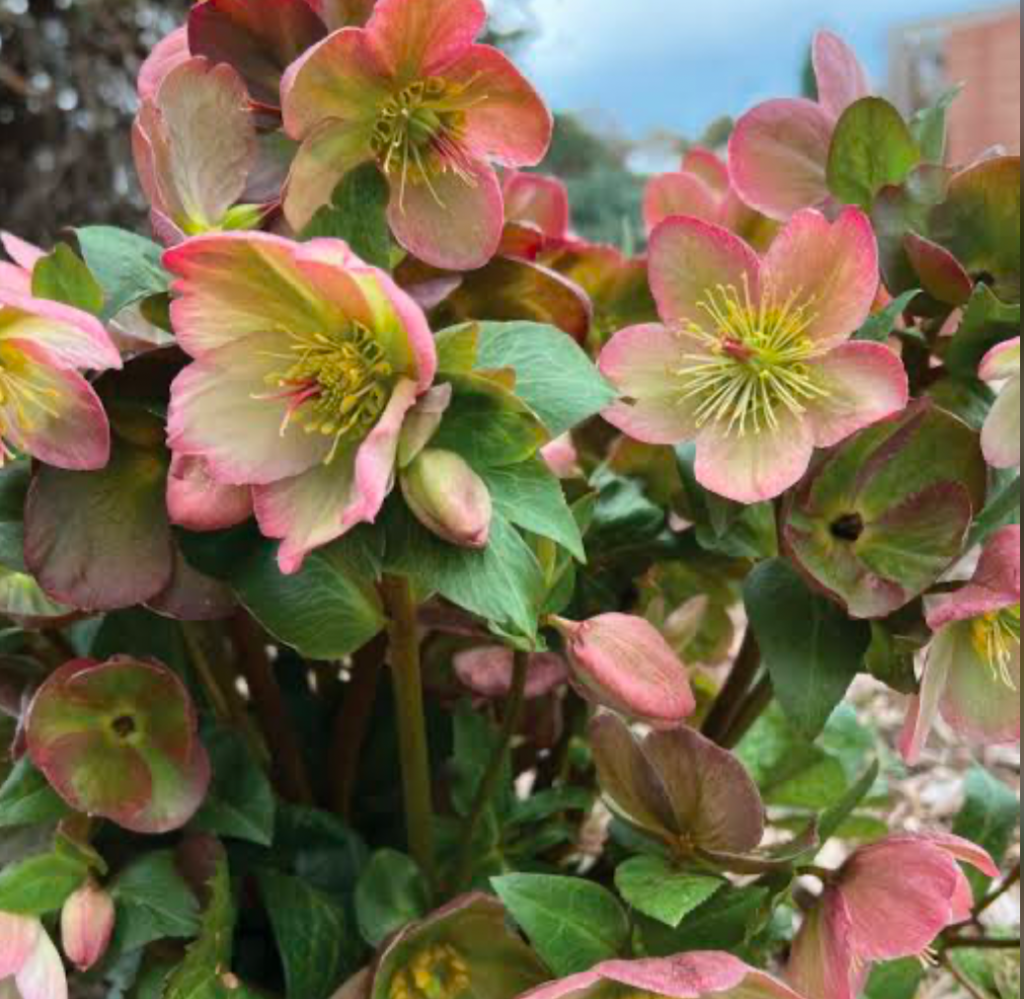
When you use evergreens for Winter, you defy the norm of having a garden devoid of life because of the lack of warmth.
Winter Flowering Plants
Embrace winter garden plants to keep visual interest and show floral plants’ resilience during the snowy season.
Some underrated cold-weather flowers you can explore include Winter Jasmine, Camellias, and Hellebores. It’s time to stop underestimating the charm of a frost-kissed garden.
Bark Textures

Lean into unique bark textures with Red Twig Dogwood. It creates a visual appeal when all else feels dormant, maintaining your garden’s structure in the cold.
Layout and Structure Tips for Seasonal Harmony
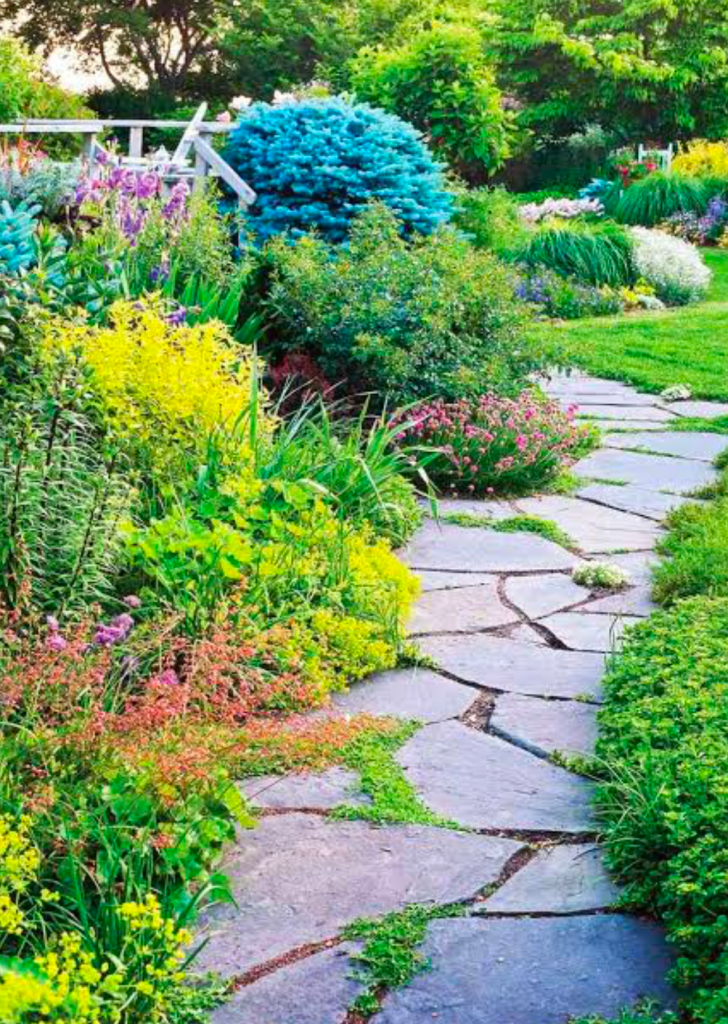
Now you understand that creating a beautiful garden is like composing a symphony. Your seasonal planting layout requires balance, rhythm, and a thoughtful arrangement of various elements.
Use these garden layout tips to achieve vibrant year-round bloom.
Flower Bed Structure
Create a harmonious flow and encourage even growth with your flower bed structure. A curved bed portrays a softer look and makes for a more aesthetically pleasing garden, while flat beds suit more defined and structured layouts.
Sun Exposure
Consider sunlight patterns when designing your layout. A neat trick for a flawless garden design balance is to group plants with similar sunlight and watering needs in the same rows or clusters.
Author’s Note: Check out our post Planning Your Garden For Maximum Sun Exposure: Essential Tips For Thriving Plants for a detailed guide on proper garden lighting!
Pathways
Use your pathways to tell a story and show how the seasons transform as guests walk through them. So, they’ll watch the seasonal transformation as they wander due to your progressive arrangement of the plants.
When done right, a structured garden allows easy maintenance access, like pruning deadheads.
Crafting a Cohesive Color Scheme Through the Year

Did you know a seasonal color palette will elevate your garden’s aesthetics? Flower color planning balances your favorite hues with complementary colors for an ethereal look.
We’re about to dive into garden color theory, so pay attention.
General color theory tells you that each hue conveys feelings and emotions. The same goes for gardening, whether warm, fiery summer flowers or cool, calming winter blooms.
You can explore any blooming color coordination from complementary opposites to analogous or monochromatic similar hues and triadic colors.
See this table for ideas.
| Complimentary | Yellow and Purple contrasts in Summer |
| Analogous | Red and Oranges in Autumn |
| Monochromatic | Snowdrops and Moonflowers in Winter |
Maintaining a Healthy and Sustainable Blooming Garden
I can’t leave you without instructions on seasonal garden care because a beautiful garden won’t maintain itself! So let’s get into it.
Pruning
Make a pruning schedule based on season changes to encourage new blooms and bushy grasses. It’s always best to prune towards Spring/Summer.
Mulching

Follow these mulch and water tips for an all-year bloom.
Mulch your garden beds to suppress weeds while retaining moisture and improving soil health. Regular watering also keeps your garden hydrated during dry spells, so think of it as laying it forward.
Fertilizing

When fertilizing by season, be careful not to overdo or underdo it. Test your soil first to know what nutrients it needs, and feed it with that exact nutrient ratio.
Pest Control
Use natural pest control methods, especially during warmer months. These include companion planting for pollinators, pest control, and nutrient sharing.
Overall, be adaptable. Observe your garden for changes and reactions to your routines and adjust accordingly for the best result.
Author’s Note: Check out our post Companion Planting for Pest Control Tips That Really Work for a detailed guide on natural pest remedies!
Hardscaping Elements That Complement Seasonal Displays

And the final part of this overview is seasonal garden accents. Incorporating pathways, patios, and decorative stones adds interesting structure to your garden by breaking plant monotony.
Materials
These landscape design tips create a holistic visual experience when plants fade into the background.
Use practical yet maintainable materials like brick, stone, and gravel for your pathways and patio accents. They add depth and texture to your garden’s landscape, especially in Winter when most vegetation dries up.
Structures
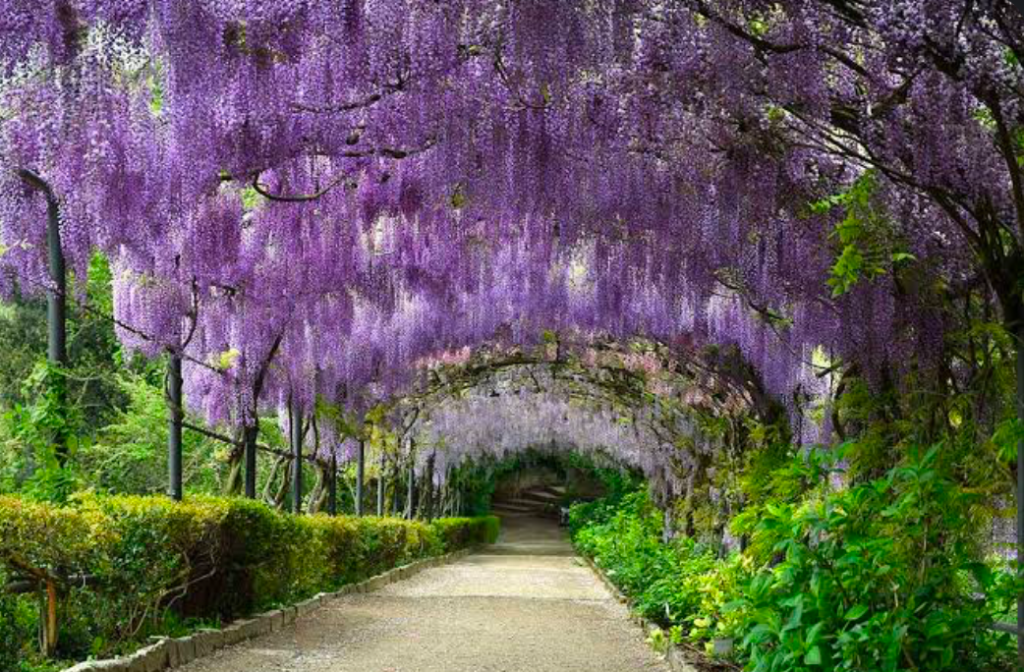
Let’s talk about trellis and pathways.
When exploring garden hardscaping ideas, trellises and arbors are revolutionary decor. These vertical gardening elements are a beautiful backdrop for climbers like Clematis and Wisteria.
Conclusion: Bloom Smarter, Not Harder—Plan for Year-Round Joy
You’ve reached the end of this year-round flower garden bloom guide. Surely, you can agree that achieving seasonal gardening success is more about careful and strategic planning than aesthetics and hope.
Nurturing nature brings joy, tranquility, and satisfaction, even if following these garden planning tips is tasking. Embrace each seasonal change with its dynamic, colorful vegetation as nature’s sweet surprise.
You can create a blooming garden with inspiration from real-life green thumbs while infusing your presence and allowing unique environmental effects to reflect in your design.
So get your hands dirty, let the blooms inspire you, and share your garden’s flourish in the comments section below!


